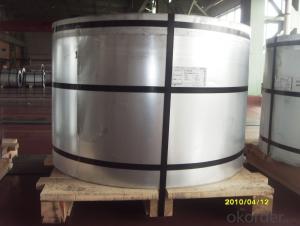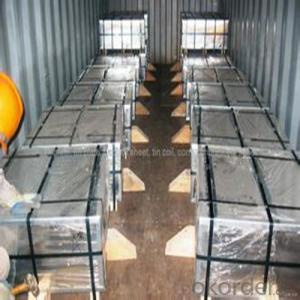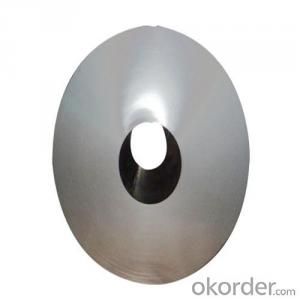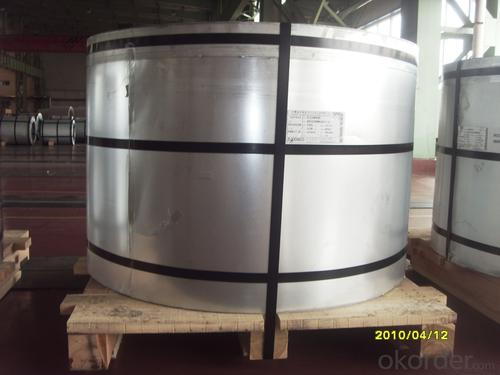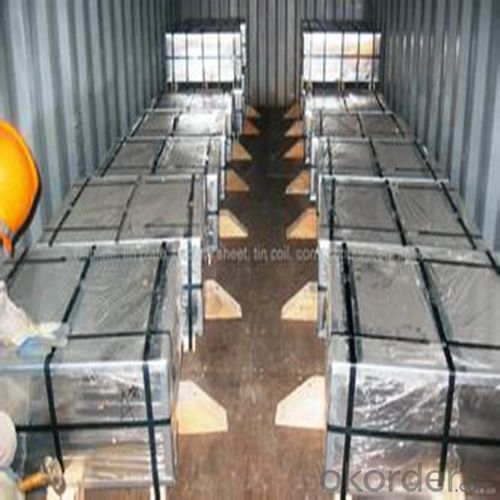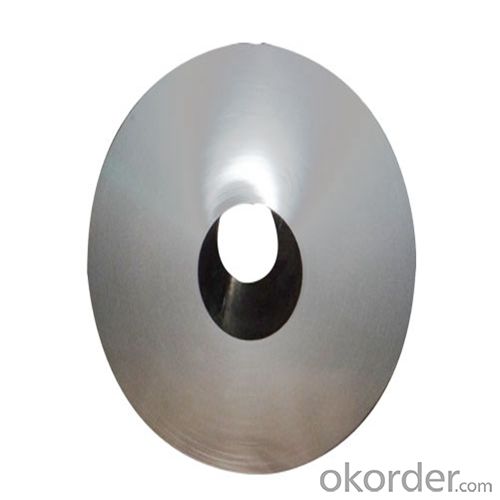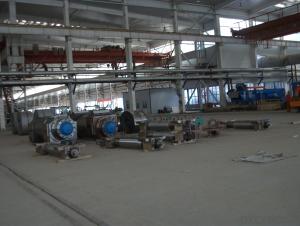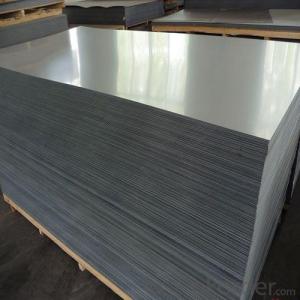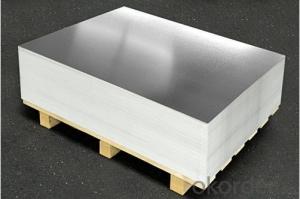Electrolytic Tinplate ETP for Food Containers Use
- Loading Port:
- Qingdao
- Payment Terms:
- TT OR LC
- Min Order Qty:
- 25 m.t.
- Supply Capability:
- 30000 m.t./month
OKorder Service Pledge
OKorder Financial Service
You Might Also Like
1.Structure of Electrolytic Tinplate ETP for Food Containers Use Description
Electrolytic Tinplate is a thin steel sheet coated by tin. It has an extremely beautiful metallic luster as well as excellent properties in corrosion resistance, solder ability, and weld ability.
2.Main Features of the Electrolytic Tinplate ETP for Food Containers Use
Electrolytic Tinplate undoubtedly enjoys the pride of place as a packaging medium especially for food. It owes its unique position to its "nine layer sandwich structure", each of which contributes to its eminence as a packing material. The steel base of electrolytic tinplate provides the necessary strength and formability for can fabrication. The tin-iron alloy layer provides the bond between the steel and free tin layer. The free tin layer is not only responsible for the attractive bright finish and ease of solderability but is also non-toxic- a factor of vital importance in food packaging!
Tinplate is also widely used for making all types of containers such as food cans, beverage cans, and artistic cans, tea cans, painting cans, chemical package cans and dry food package cans, metal printing etc. Its applications are not limited to containers; recently, electrolytic tinplate has also been used for making electrical machinery parts and many other products.
3.Electrolytic Tinplate ETP for Food Containers Use Images
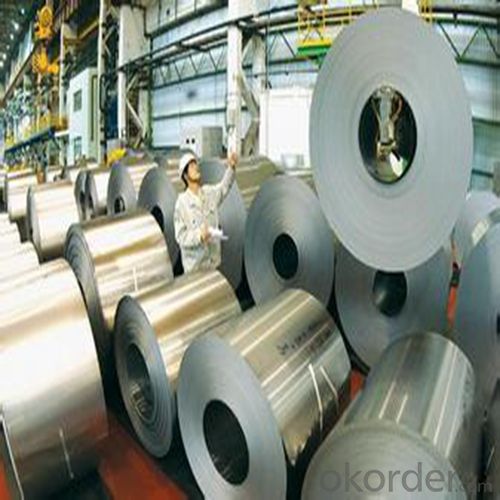
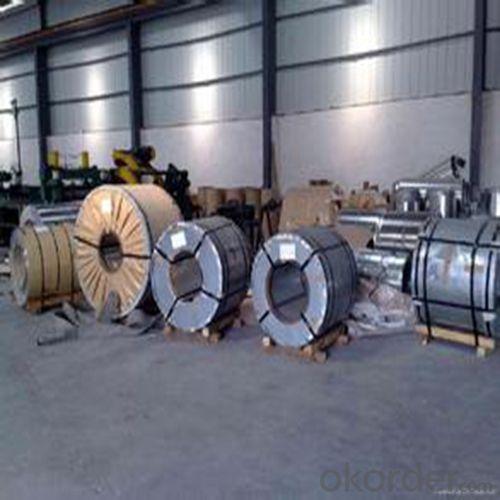
4.Electrolytic Tinplate ETP for Food Containers Use Specification
Standard:JIS G3303
Material: MR
Thickness:0.35mm
Width: 750
Temper: T3
Annealing: BA
Coil Inner Diameter: 508mm
Weight: 7 tons/coil
Passivation:311
Oil: DOS
Surface: Finish,bright,
5.FAQ of Electrolytic Tinplate ETP for Food Containers Use
1. What is the delivery time for your prime quality tinplate?
Usually 35 days after order confirmation.
2. What is your Minimum Order Quantity?
Usually MOQ is 50tons for one single size, for trial order, it can be 25 tons.
3. What is the payment term?
The most common we use is L/C at sight or TT. We can also try use other terms.
- Q: Who knows the process of tinplate production?
- Cold rolling: the hot rolled strip passes through the pickling process and enters the cold rolling process. The strip is plastically deformed during the work roll, and the thickness is about 2mm.2mm from about 0. In cold rolling, in order to reduce the friction between the strip and the work roll and take away a large amount of heat produced by the plastic deformation, the cold rolling lubricant and coolant should be sprayed onto the strip. A reversible mill with single stand is adopted. In order to keep the shape of the roller effectively, the temperature control of the cooling liquid is more important. Range of production: 0.14mm-0.5mm.Slitting: the required width of slitting material after cold rolling. Range of production: 265mm-835mmSkim: in the cold rolling process in rolling oil cooling after tin plate surface adhesion of oil and other foreign matter, such as do not wash directly by annealing the oil incomplete combustion of carbonaceous residue will stain in the strip, for the production of tinplate can meet the quality requirements. Therefore, the tin plate must be cleaned by electrolysis before removing the grease. The common method of cleaning tin plate is to degrease and degrease the degreasing liquid.
- Q: What are the main applications of tinplate in the furniture industry?
- Tinplate is widely used in the furniture industry for various applications such as decorative elements, hardware components, and protective coatings. It provides a durable and corrosion-resistant surface finish, making it ideal for metal furniture pieces. Tinplate is also commonly used in the production of metal furniture frames, as it offers excellent strength and stability. Additionally, tinplate can be utilized for intricate designs and embossing, enhancing the aesthetic appeal of furniture items.
- Q: What are the different types of tinplate lamination?
- There are primarily two types of tinplate lamination: single reduced (SR) and double reduced (DR). In single reduced tinplate lamination, the steel base undergoes a single reduction process, resulting in a thinner tin coating. On the other hand, double reduced tinplate lamination involves two reduction processes, yielding a thinner and more uniform tin coating.
- Q: How many kinds of tinplate are there? What is the code number?
- Specification: Tinplate tinplate cans (three cans) is mainly divided into "15120", "15173", "15240" etc.. "15120" capacity is 2.2kg, diameter is 150.3, height is 120; "15173" capacity is 3kg, diameter is 150, height 173; "15240" capacity is 4.5kg, diameter is 150, height is 240.
- Q: What are the different methods of opening tinplate containers?
- There are several methods of opening tinplate containers, including using a can opener, a knife, a key, or pulling on the tab for easy-open cans.
- Q: What are the main trends in tinplate packaging?
- The main trends in tinplate packaging include a shift towards eco-friendly and sustainable materials, increased customization options for branding purposes, and the integration of technology for improved convenience and functionality.
- Q: How does tinplate packaging contribute to product ease of use?
- Tinplate packaging contributes to product ease of use by providing durability and strength that ensures the product remains intact during transportation and handling. Its protective properties prevent damage, leakage, and contamination, ensuring the product inside remains fresh and safe for consumption. Additionally, tinplate packaging often includes convenient features such as easy-to-open lids, resealable options, and ergonomic designs that enhance the overall user experience and make the product more convenient to use.
- Q: What are the different ways to seal tinplate cans?
- There are several methods to seal tinplate cans. Some common ways include double seaming, soldering, welding, adhesive bonding, and using plastic or metal caps with sealing compounds. Each method has its own advantages and is chosen based on factors such as the type of product being packaged, desired shelf life, cost, and production requirements.
- Q: Does tinplate corrode over time?
- Yes, tinplate can corrode over time.
- Q: What are the main factors influencing the growth of the tinplate industry?
- The main factors influencing the growth of the tinplate industry include increasing demand for packaged food and beverages, expanding urbanization and industrialization, advancements in technology leading to improved production processes, and the growing awareness about the benefits of metal packaging such as durability, recyclability, and food safety. Additionally, economic growth in emerging markets and the rising disposable income of consumers are also driving the growth of the tinplate industry.
Send your message to us
Electrolytic Tinplate ETP for Food Containers Use
- Loading Port:
- Qingdao
- Payment Terms:
- TT OR LC
- Min Order Qty:
- 25 m.t.
- Supply Capability:
- 30000 m.t./month
OKorder Service Pledge
OKorder Financial Service
Similar products
Hot products
Hot Searches
Related keywords
